The 17 Biggest News Stories Of 2017

2017: Acquisitions And Splits, Security Failures and IT Vendors In Transition
This past year was an eventful one in the IT industry and the channel – but then, what year isn't? So compiling a list of the 17 biggest news stories for 2017 proved to be a relatively easy task.
There were times when the IT industry felt like a giant Lego set with pieces being combined, taken apart and put back together in different configurations. There were mega-billion-dollar acquisitions acquisitions like Broadcom and Brocade Communications, Sirius and Forsythe, and CenturyLink and Level 3. And there were splits and divestitures including Xerox splitting into two companies, Hewlett Packard Enterprise divesting its Enterprise Services business and McAfee separating from Intel.
There were new opportunities like the Internet of Things that drove many changes within the IT industry. Major vendors like HPE, Cisco and Dell EMC continued their efforts to transform themselves through shifts in strategies, new products and acquisitions. And there were controversies such as the ban on the use of Kaspersky Lab software by the U.S. government and the European Union's $2.7 fine against Google for alleged anti-competitive behavior.
All the while IT vendors, solution providers and their customers dealt with crises ranging from DDoS and ransomware attacks, to cloud service outages, to the shortage of SSD components.
What do you think have been the biggest IT industry and channel news stories of 2017? Take a look at our list, concluding with the most important story, and see if you agree.
Get more of CRN's 2017 tech year in review.
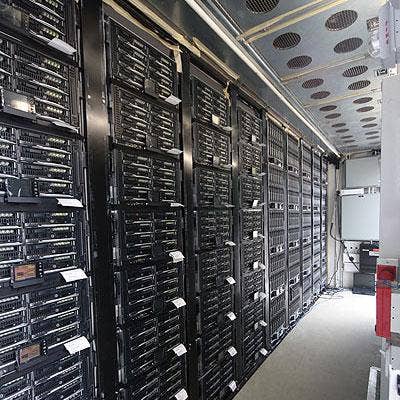
17. Sirius Acquires Forsythe Creating A $3 Billion-Plus Channel Powerhouse
In August CRN broke the news that data center giant Sirius Computer Solutions was in talks to acquire Forsythe Technology, a $1 billion-plus solution provider and one of the biggest security technology integrators in North America.
Sirius, a top IBM partner and No. 26 on the CRN Solution Provider 500, completed the acquisition of Forsythe, No. 37 on the CRN Solution Provider 500, on Nov. 1. The combination of the two companies creates a new channel powerhouse with sales greater than $3 billion and expertise in data center, hosting, security, cloud and connectivity services.
The acquisition raises Sirius on the CRN Solution Provider 500 past Unisys, Presidio and Connection.
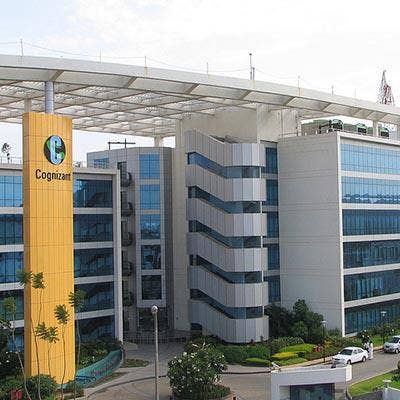
16. Cognizant Strikes Deal With Activist Investor Elliott Management
Activist investor Elliott Management has acquired sizeable stakes in such companies as BMC Software and Citrix Systems in recent years and waged lengthy battles with their directors over demands the companies restructure, improve their profitability and return more profits to shareholders. Many observers expected the same in late 2016 when Elliott acquired a 4 percent stake in systems integrator Cognizant and demanded changes.
But rather than go to war, Cognizant took a different tact and quickly struck a deal with Elliott, announcing on Feb. 8 an agreement to appoint three independent members to its board of directors and create a financial policy committee. More importantly, Cognizant said it would invest more in new technology practices such as digital transformation services, expand profit margin targets and return $3.4 billion to shareholders through dividends and share repurchases.
Cognizant CEO Francisco D'Souza hailed the deal as an opportunity to accelerate change within the company. Could it be a model for other IT companies that are under pressure from investors to re-invent themselves?
But in a reminder that transformations can be painful, Cognizant said in August that it shed 4,400 employees in its second quarter as it pivoted toward business that required higher-level digital skills.
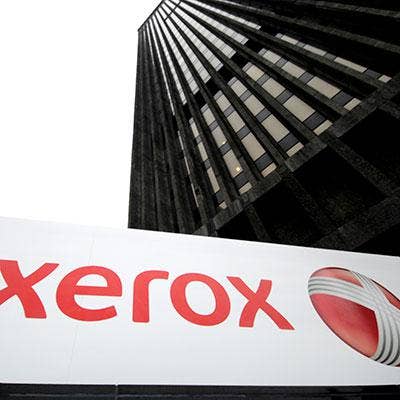
15. Xerox Starts 2017 By Splitting Into Two Companies, Ends With Management Power Struggle
Channel mainstay Xerox spent much of 2016 preparing for its split into two companies, one an $11 billion company retaining the Xerox name focused on document technology, and the other a $6.7 billion business process services company called Conduent. The split was officially executed on Jan. 1 and the two companies went their separate ways.
The goal was to make Xerox a more focused company. And it took a significant step toward that vision on March 29 when it debuted 29 new printers and multifunction devices – the first product launch since the split and the biggest in the company's history.
And in April Xerox signaled its commitment to the channel when it hired longtime channel champion Pete Peterson away from Tech Data for a new channel post focused on driving best channel practices and helping to grow the company's channel sales.
But 2017 ended on a rough note for Xerox when investor Carl Icahn began campaigning for changes to the company's board of directors and called for the removal of CEO Jeff Jacobsen less than a year after his appointment. Icahn, who owns a 9-percent stake in Xerox, said the company runs the risk of going "the way of Kodak" unless it changes direction.
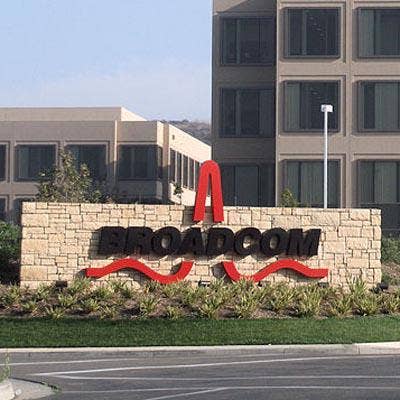
14. Broadcom (Finally) Closes Its $5.9 Billion Acquisition Of Brocade Communications After A Year Of Uncertainty
Semiconductor maker Broadcom announced on Nov. 2, 2016, an agreement to acquire networking systems supplier Brocade Communications Systems for $5.9 billion. While the companies hoped to wrap up the acquisition by August, delays in gaining government approval took much longer and the acquisition wasn't consummated until Nov. 17.
The result: The Broadcom-Brocade deal became a running saga throughout 2017 as the deal progressed and plans were made to sell off some of Brocade's businesses. Broadcom wanted Brocade for its fibre channel SAN switching business and indicated early on its intention to spin off other operations – including Brocade's IP networking business and Ruckus Wireless, which Brocade acquired in May 2016 for $1.2 billion.
The most notable of those spinoffs was the announcement that Arris International would acquire Brocade's network-edge portfolio, including Ruckus Wireless, for $800 million. Extreme Networks agreed to purchase Brocade's data center networking business. And Pulse Secure said it would buy Brocade's virtual application delivery controller business.
Brocade's seemingly endless limbo status created headaches for the company's channel partners, especially those working with Ruckus Wireless, who complained that customers held off closing deals and delayed purchasing Brocade and Ruckus products. There were also reports that hundreds of Brocade employees were leaving the company amid the uncertainty.
Brocade finally began to shed assets, selling both its Vyatta Software Platform to AT&T and virtual application delivery controller to Pulse Secure, both in June; its virtual packet business to Mavenir Systems in August; and its data center networking assets to Extreme Networks in October. Finally, two weeks after Broadcom completed the Brocade acquisition, Arris International acquired Ruckus on Dec. 1.
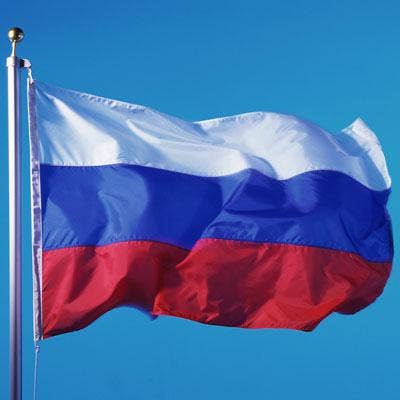
13. Kaspersky Lab's Software Banned In U.S. Government Networks Due To Alleged Russia Ties
Following Russia's reported interference in the U.S. 2016 presidential election, any connection with that country was looked upon with suspicion in 2017. And that made it a tough year for antivirus and security software developer Kaspersky Lab.
Kaspersky, which is headquartered in Moscow and has its North American headquarters in Woburn, Mass., found itself in the federal government's crosshairs this year after several elected officials charged that Kaspersky's software posed a security threat to the U.S. government because of Kaspersky Lab's alleged ties to the Russian government.
Despite denials of such ties from the company and CEO Eugene Kaspersky, the federal government removed Kaspersky software from the GSA Schedule in July and in September the Department of Homeland Security ordered all Kaspersky software removed from federal government IT systems within 90 days.
Kaspersky partners found themselves facing questions about the controversy, with some of them slowing and even halting work with the vendor. In September electronics retailer Best Buy said it would no longer sell Kaspersky's consumer security software.
In early December Kaspersky Lab made plans to close its Washington D.C.-area office following the ban on the use of its products for the U.S. government's information systems.
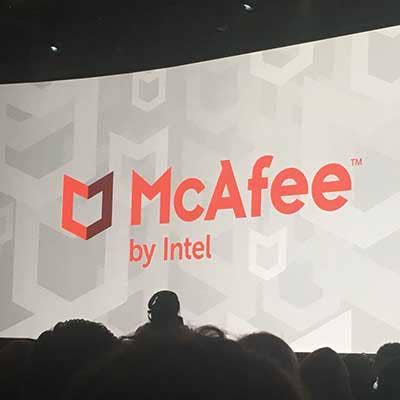
12. The Return Of McAfee
McAfee, the security software heavyweight that Intel acquired in 2010 for $7.7 billion, became an independent company once again as a standalone $2 billion security software vendor.
The spinoff, announced in September 2016, involved selling a 51-percent stake in McAfee to TPG Capital in a deal worth $4.2 billion, including $3.1 billion in cash to Intel and a $1.1 billion equity investment by TPG. McAfee officially became an independent company on April 4.
McAfee finds itself in an increasingly competitive security technology market where big, established companies like McAfee and Symantec are re-inventing themselves as they face competition from a wave of startups like Cylance and Crowdstrike. Newly free of Intel, can McAfee become more nimble and succeed in today's rapidly changing security industry?
In November McAfee signaled that it's not standing still, striking a deal to acquire Skyhigh Networks, a leading cloud access security broker, in a bid to establish a dominant position in both the endpoint and cloud cybersecurity markets.

11. Google Hit With $2.7 Billion Fine By European Union, Other Companies Handed Bills For Back-Taxes
European Union regulators had charged Google with allegedly engaging in antitrust behavior by giving its own comparison shopping service an "illegal" advantage and using its dominant position in Internet search to stifle competition. So Google was braced for a hefty fine.
But observers were stunned June 27 when the European Commission hit Google with a whopping $2.7 billion fine in the case, the largest ever imposed by the governing body. It far exceeds the $1.2 billion fine the EC levied against Intel in 2009 in another antitrust case.
The Google fine wasn't the only case of the European Union playing hardball with U.S. IT companies in 2017.
The EU charged that Apple owed 13 billion Euro ($15.4 billion) in back taxes because of an alleged unfair tax deal in Ireland. The EU took Ireland to court over the dispute in October. But in December Apple agreed to pay the disputed amount of money into an escrow account while it appealed the case in court. In an interview with the Irish Independent newspaper in September, Apple CEO Tim Cook called the dispute "total political crap."
In October EU ordered Amazon to pay 250 million Euro (nearly $294 million) in unpaid back taxes.

10. Massive AWS, Microsoft Service Outages Raise Concerns About Public Clouds
A service outage that hit Amazon Web Services' S3 cloud storage systems on Feb. 28 wreaked havoc around the world, disrupting websites and Internet services for millions of users. A few days later Amazon apologized and blamed the outage on a botched effort by an employee to debug a billing system.
In March customers of Microsoft's cloud services were inconvenienced by several system outages, including storage availability issues with the company's Azure public cloud service in mid-March and a 17-hour Office 365 service outage on March 21 that kept users from accessing their OneDrive accounts.
With an increasing number of businesses dependent on cloud-based IT systems, the outages served as a wakeup call for solution providers and their customers of the potential pitfalls of putting all your IT resources in one public cloud basket. While public cloud systems offer cost advantages, the outages made clear the advantages of having a comprehensive cloud strategy incorporating both public and private cloud services with the requisite security and redundancy built in.

9. Cisco Moves Into Hyperconverged Systems, Cloud Management With Acquisitions
Cisco, which grew into an industry behemoth through its sales of networking hardware, has been transforming itself into a supplier of software-centric solutions. In 2017 the company took a number of steps in furtherance of that goal, including making some key acquisitions.
Most notable was Cisco's $3.7 billion acquisition of cloud application monitoring and management company AppDynamics in March. It was one of the IT industry's biggest acquisitions in the first half of 2017. But equally important was what the acquisition meant to Cisco in its efforts to transform itself from a networking hardware vendor into a supplier of software-centric solutions.
In August Cisco acquired software-defined WAN specialist Viptela for $610 million in a move to accelerate its Network Intuitive strategy. In September Cisco acquired hyper-converged software developer Springpath for $320 million in an effort to boost its data center strategy, which already included its HyperFlex and Unified Computing System product lines.
Cisco's moves also included an alliance with Google to create a hybrid cloud service, teaming with ConnectWise to create a "managed service in a box" for MSPs to monitor and manage Cisco cloud-based systems, and acquiring machine-learning startup Perspica to enhance the AppDynamics platform.
In October Cisco made a bid for a bigger share of the unified communications market by striking a deal to buy unified communications software developer BroadSoft for $1.9 billion. But the move illustrated the difficulties that come with transformation: Partners were critical of the acquisition because it would effectively make Cisco a competitor to partners who have invested in developing hosted voice practices.
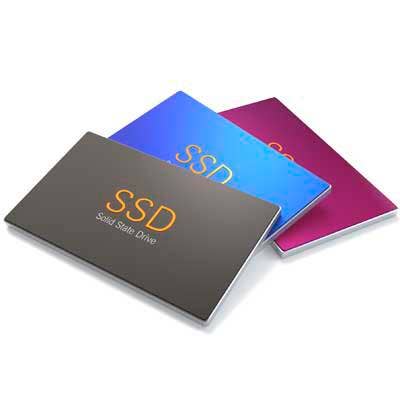
8. IT Vendors, Channel Struggle With Memory And SSD Component Shortages
For much of 2017 IT vendors, solution providers and system builders wrestled with short supplies of solid-state drives, some times making it difficult to deliver servers and storage systems to customers on time.
The shortage was believed to result from a combination of the fast-growing demand for SSDs as their per-gigabyte price neared that of hard disks; and a transition by manufacturers of NAND memory toward 3D NAND technology.
The shortages also led to higher server and PC prices. Solution providers said their revenue, profitability and cash flows were impacted by the shortage and in some cases they lost deals when they could not supply customers with needed systems on time.

7. Tech Data Changes the Distribution Landscape With Avnet Technology Solutions Acquisition
On Feb. 27 distributor Tech Data acquired Avnet Technology Solutions, Avnet's $9.65 billion value-added distribution business, for $2.6 billion in a move that changed the IT distributor landscape.
By acquiring Technology Solutions, Clearwater, Fla.-based Tech Data vastly expanded its product portfolio of systems for the data center, cloud computing, security, mobility, big data analytics, the Internet of Things and vertical industries. It also increased the share of Tech Data's revenue generated by more complete IT solutions.
In June CEO Bob Dutkowsky (pictured) said that thanks to the acquisition, Tech Data is gaining market share in key countries and product categories.

6. Verizon And CenturyLink Complete Blockbuster Acquisitions, AT&T Blocked From Buying Time Warner
The major telecommunications carriers were active on the acquisition front in 2017, looking to boost their product portfolios with new content and service capabilities. Two of the acquisitions were successfully completed while one hit a very serious roadblock.
In June Verizon finally closed its long-gestating acquisition of Web portal company Yahoo and its popular media assets, including its sports and finance content. Closing that deal came with some drama, however, after Yahoo disclosed that it had been hit with massive security breaches in 2013 and 2014 that compromised more than 1.5 billion subscriber accounts. Verizon ultimately negotiated a new $4.48 billion purchase price – a $350 million discount from the price the two companies initially agreed on.
In another critical acquisition, Verizon out-bid rival AT&T with a $3.1 billion, all-stock offer to acquire wireless spectrum holder Straight Path Communications.
CenturyLink, meanwhile, closed its long-in-the-works acquisition of Level 3, completing the $34-billion deal on Nov. 1. Combined the two companies form the second largest domestic communications provider serving global enterprise customers.
Things haven't gone as smoothly for AT&T and its year-long effort to buy Time Warner, the owner of CNN, HBO and other properties, for $85.4 billion. In November the U.S. Department of Justice announced it would sue AT&T in a bid to halt the acquisition, saying it would be anticompetitive and "result in fewer innovative offerings and higher bills" for consumers.
And the telecommunications industry spent much of 2017 debating the fate of Obama-era "net neutrality" rules governing how Internet service providers handle web traffic. Republican appointees to the Federal Communications Commission proposed disbanding the rules and, while the plan met with intense opposition, FCC commissioners voted on December 14 to dismantle the regulations, allowing Internet service providers to speed up service for some websites and applications, and block or slow down others.
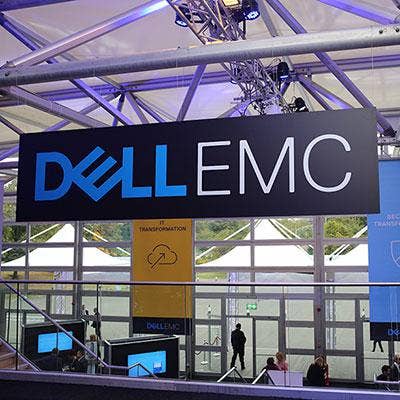
5. Newly Merged Dell EMC Goes On The Offensive, Launches New Partner Program
Dell completed its $65 billion acquisition of storage giant EMC in September 2016, creating an IT industry heavyweight and channel powerhouse. As 2017 got under way the real questions were where and how the newly created company would compete and, for hundreds of Dell and EMC partners, what the new Dell EMC channel program would look like.
On Feb. 4 Dell EMC executives unveiled a single partner program with the stated goal of offering the most profitable partner program in the industry. The program, for instance, doubled the storage system rebates from the legacy EMC program and rewarded partners for selling converged and hyper-converged systems. The vendor also said it would pump $150 million into partner incentives in the coming fiscal year.
In November Dell EMC doubled-down on the channel with a slew of new partner incentives, a new services toolkit, tier protection and a partner program tracking tool.
Dell EMC, meanwhile, aggressively expanded its product portfolios and marketing efforts in server, networking and storage systems (including an aggressive push into all-flash storage) to compete head-to-head with other industry heavyweights including Hewlett Packard Enterprise, Cisco and NetApp.
Is it working? There have been bumps along the way, but the company seems to have momentum. In the third quarter, for example, Dell's worldwide server sales grew 37.9 percent year-over-year to exceed $3 billion, according to IDC, and its market share surged from 15.7 percent to 18.1 percent – putting it within striking distance of No. 1 HPE.

4. IT Vendors, Startups And Solution Providers Rush To Position Themselves For The IoT Goldrush
The global Internet of Things market is forecast to explode to $457 billion by 2020, led by applications in smart cities, industrial IoT and connected health, according to GrowthEnabler. What's more, a report from International Data Corp. concluded the real value of IoT lies in the software and services needed to capture, analyze and act on the data generated by IoT systems – the kind of software and services offered by solution providers.
So it's no surprise that in 2017 IT vendors and solution providers scrambled to position themselves in the nascent IoT arena. Among the leaders was Intel, which debuted IoT platforms for the retail industry in January – along with a pledge of a five-year, $100-million investment – and the shipping and logistics industries in May. In October Intel launched a service to help customers install IoT devices more quickly and securely. But Intel's biggest move was its deal in March to acquire Mobileye, a developer of components for connected cars, for a whopping $15.3 billion.
Intel wasn't alone. Cisco debuted the IoT Operations Platform to help partners and customers deploy IoT solutions. Hewlett Packard Enterprise unveiled the HPE Edgeline Services Platform for managing and controlling industrial connected systems and networks, including IoT devices. Dell Technologies launched an IoT division to develop IoT products and an IoT partner program. Amazon Web Services, was particularly active, launching its Greengrass software for linking IoT "edge" devices to the AWS cloud and adding new security, analytics and management capabilities to its AWS IoT Core platform.
The potential of the IoT market also fueled a wave of startups offering everything from IoT security (Armis), to industrial IoT technology (IoTium and Foghorn Systems), to web-connected sensors (Samsara). And IoT startups, especially in IoT security, received generous amounts of funding from venture capital firms in 2017.
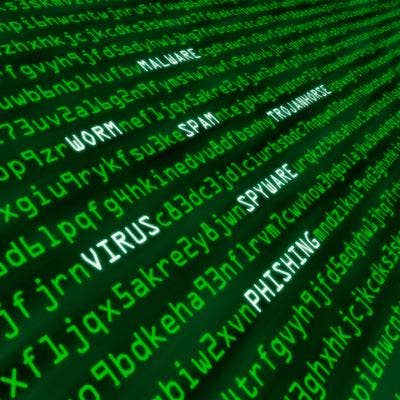
3. DDoS And Ransomware Attacks – And The Massive Equifax Breach – Raise The Security Stakes
IT security threats have been on the rise in recent years with highly publicized attacks against companies such as Yahoo, Sony and Target. But several widespread ransomware and distributed denial of service attacks this year really caught everyone's attention and provided clear evidence of how serious the security problem has become.
A global attack that became known as "WannaCry" crippled as many as 200,000 computers across 150 countries in mid-May, especially targeting healthcare organizations and telecommunications companies. WannaCry was particularly pernicious because it combined ransomware with a computer worm – a never-before-seen combination that allowed the attack to spread so quickly.
In late June a second widespread ransomware attack, which appeared to begin in the Ukraine, quickly spread around the world hitting companies in the legal, shipping and pharmaceutical industries. The attack increased worries about the vulnerability of critical infrastructure and Internet of Things networks.
Security concerns around IoT networks were also in the spotlight in April when a massive DDoS attack against an unnamed U.S. college was made public. Experts said the incident, described as an application layer attack, was evidence of how IoT attacks are evolving to become more elaborate and more sophisticated. A vulnerability dubbed "BlueBorne," disclosed in September, was believed to open as many as 5 billion IoT devices to a Bluetooth cyber attack.
But it was the stunning security failure at credit reporting services company Equifax, disclosed in September, which really brought the problem home to consumers everywhere. The security breach exposed sensitive data, including birth dates and social security numbers, on 143 million people and consumers scrambled to sign up for credit monitoring services and freeze their credit histories.
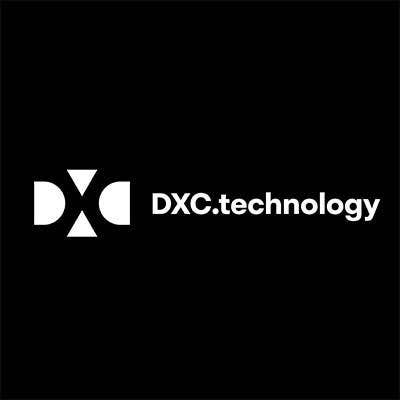
2. DXC Technology Emerges As A Channel Heavyweight
Nearly a year in the making, CSC closed its merger with Hewlett Packard Enterprise's Enterprise Services business on April 3, officially opening for business as DXC Technology, a $26-billion solutions provider behemoth.
CSC and HPE announced the plan in May 2016, and throughout the rest of the year and into 2017 continued making preparations for the merger. The new company's operating structure and executive lineup was announced Feb. 2 and the DXC name was unveiled two weeks later. The deal was sealed March 27 when CSC shareholders gave their approval.
In addition to providing more traditional IT services DXC, led by president and CEO Mike Lawrie, is focused on digital transformation, business process services and industry-specific technology and services.
But DXC continues to evolve to keep up with the changing IT industry. On July 5 DXC announced that it had acquired Tribridge, an integration services company that works with Microsoft's Dynamics 365 cloud applications, boosting the company's position in the Microsoft applications arena. And in October DXC struck a deal to buy Logicalis SMC in a move to expand its ServiceNow business.
The company is also striving to cut its operating costs by $1 billion this year. And in October the company surprised many when it announced a plan to spin off its U.S. government business in 2018 and merge it with two other companies to create a new public sector IT services powerhouse.
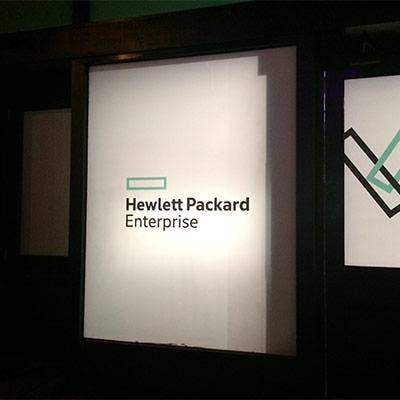
1. The Transformation Of Hewlett Packard Enterprise And The Company's Leadership Change
Hewlett Packard Enterprise was created in 2015 from the split of the Hewlett-Packard Co. But the transformation was far from complete: In 2017 HPE, through key acquisitions, a major divestiture and a change in the company's top executive post, continued its efforts to remake itself in a fast-changing industry.
In April, after nearly a year of preparations, HPE spun off its Enterprise Services business, which was then merged with CSC to form DXC Technology, a new systems integration and services leader.
But even as HPE was divesting its services business, it was making a series of acquisitions that strengthened its position in servers and storage. In February HPE acquired SimpliVity for $650 million, instantly boosting its competitive position in the red hot hyper-converged systems market against rivals Cisco, Dell EMC and Nutanix.
In April HPE bought Nimble Storage, a developer of leading-edge flash storage systems, for $1.09 billion. And in February, between the SimpliVity and Nimble deals, HPE bought Niara, a startup developer of security analytics and network forensics technology, in a move to boost HPE's Aruba ClearPass network security portfolio.
In early November, in a move heavy with symbolism, HPE announced that it would move out of its long-time headquarters in Palo Alto, Calif., to a facility in Santa Clara.
But the biggest move was yet to come. On Nov. 21 Meg Whitman (pictured), who began serving as CEO of HP in 2011 and held that post at HPE after the split, announced that she would step down as of Feb. 1, 2018. Taking over the top job is Antonio Neri, who was promoted from executive vice president to president in June.
The story of HPE's transformation is ongoing, including the company's massive "Next" restructuring initiative, and in 2018 it will be up to Neri to write the next chapter.